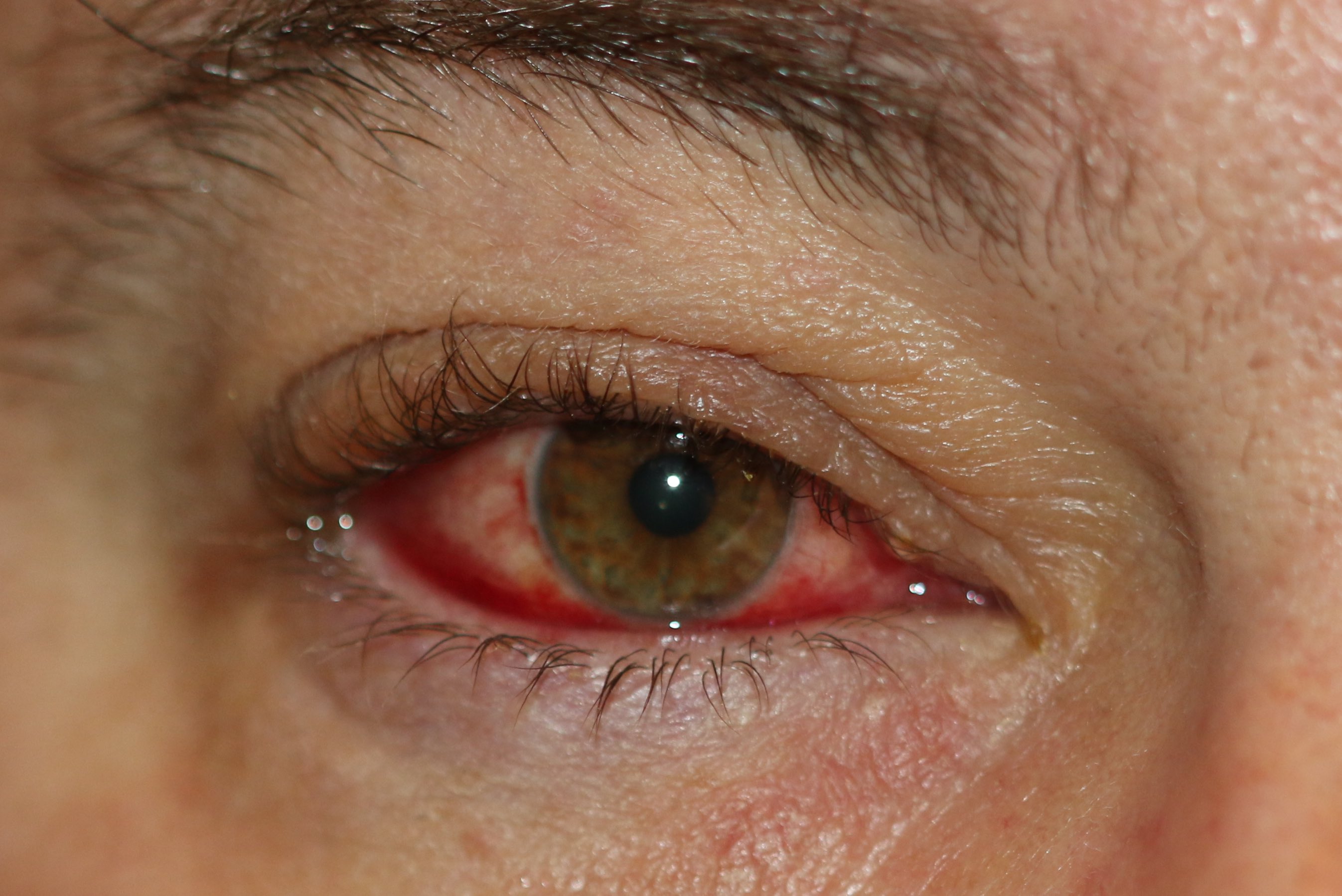[1]
THYGESON P. The etiology and treatment of blepharitis; a study in military personnel. Military surgeon. 1946 Mar:98():191-203
[PubMed PMID: 21017790]
[2]
McCulley JP, Dougherty JM, Deneau DG. Classification of chronic blepharitis. Ophthalmology. 1982 Oct:89(10):1173-80
[PubMed PMID: 6218459]
[3]
Huber-Spitzy V, Baumgartner I, Böhler-Sommeregger K, Grabner G. Blepharitis--a diagnostic and therapeutic challenge. A report on 407 consecutive cases. Graefe's archive for clinical and experimental ophthalmology = Albrecht von Graefes Archiv fur klinische und experimentelle Ophthalmologie. 1991:229(3):224-7
[PubMed PMID: 1831177]
Level 3 (low-level) evidence
[4]
Mathers WD, Choi D. Cluster analysis of patients with ocular surface disease, blepharitis, and dry eye. Archives of ophthalmology (Chicago, Ill. : 1960). 2004 Nov:122(11):1700-4
[PubMed PMID: 15534133]
[5]
Amescua G, Akpek EK, Farid M, Garcia-Ferrer FJ, Lin A, Rhee MK, Varu DM, Musch DC, Dunn SP, Mah FS, American Academy of Ophthalmology Preferred Practice Pattern Cornea and External Disease Panel. Blepharitis Preferred Practice Pattern®. Ophthalmology. 2019 Jan:126(1):P56-P93. doi: 10.1016/j.ophtha.2018.10.019. Epub 2018 Oct 23
[PubMed PMID: 30366800]
[6]
Pelletier JS, Stewart KP, Capriotti K, Capriotti JA. Rosacea Blepharoconjunctivitis Treated with a Novel Preparation of Dilute Povidone Iodine and Dimethylsulfoxide: a Case Report and Review of the Literature. Ophthalmology and therapy. 2015 Dec:4(2):143-50. doi: 10.1007/s40123-015-0040-4. Epub 2015 Nov 2
[PubMed PMID: 26525679]
Level 3 (low-level) evidence
[7]
Librando A, Carlesimo SC, Albanese G, Albanese GM, Migliorini R, Pacella E. Effectiveness of 0.1% topical salicylic acid on blepharoconjunctivitis affecting glaucoma patients treated with topical prostaglandin analogues: a prospective randomized trial. International journal of ophthalmology. 2018:11(12):1936-1940. doi: 10.18240/ijo.2018.12.10. Epub 2018 Dec 18
[PubMed PMID: 30588426]
Level 1 (high-level) evidence
[8]
Putnam CM. Diagnosis and management of blepharitis: an optometrist's perspective. Clinical optometry. 2016:8():71-78. doi: 10.2147/OPTO.S84795. Epub 2016 Aug 8
[PubMed PMID: 30214351]
Level 3 (low-level) evidence
[9]
Suzuki T. Inflamed Obstructive Meibomian Gland Dysfunction Causes Ocular Surface Inflammation. Investigative ophthalmology & visual science. 2018 Nov 1:59(14):DES94-DES101. doi: 10.1167/iovs.17-23345. Epub
[PubMed PMID: 30481812]
[10]
IRINODA K, MIKAMI H. Angular blepharoconjunctivitis and pyridoxine (vitamin B6) deficiency. A.M.A. archives of ophthalmology. 1958 Aug:60(2):303-11
[PubMed PMID: 13558802]
[12]
Machalińska A, Zakrzewska A, Markowska A, Safranow K, Wiszniewska B, Parafiniuk M, Machaliński B. Morphological and Functional Evaluation of Meibomian Gland Dysfunction in Rosacea Patients. Current eye research. 2016 Aug:41(8):1029-1034
[PubMed PMID: 26644191]
[13]
Liu J, Sheha H, Tseng SC. Pathogenic role of Demodex mites in blepharitis. Current opinion in allergy and clinical immunology. 2010 Oct:10(5):505-10. doi: 10.1097/ACI.0b013e32833df9f4. Epub
[PubMed PMID: 20689407]
Level 3 (low-level) evidence
[14]
Paulose SA, Sherman SW, Dagi Glass LR, Suh LH. Dupilumab-associated blepharoconjunctivitis. American journal of ophthalmology case reports. 2019 Dec:16():100550. doi: 10.1016/j.ajoc.2019.100550. Epub 2019 Sep 5
[PubMed PMID: 31535057]
Level 3 (low-level) evidence
[15]
Baskan C, Duman R, Balci M, Ozdogan S. A rare cause of blepharoconjunctivitis: Phthiriasis palpebrarum. Nigerian journal of clinical practice. 2014 Nov-Dec:17(6):817-8. doi: 10.4103/1119-3077.144419. Epub
[PubMed PMID: 25385926]
[16]
Lemp MA, Nichols KK. Blepharitis in the United States 2009: a survey-based perspective on prevalence and treatment. The ocular surface. 2009 Apr:7(2 Suppl):S1-S14
[PubMed PMID: 19383269]
Level 3 (low-level) evidence
[17]
Schaumberg DA, Nichols JJ, Papas EB, Tong L, Uchino M, Nichols KK. The international workshop on meibomian gland dysfunction: report of the subcommittee on the epidemiology of, and associated risk factors for, MGD. Investigative ophthalmology & visual science. 2011 Mar:52(4):1994-2005. doi: 10.1167/iovs.10-6997e. Epub 2011 Mar 30
[PubMed PMID: 21450917]
[18]
McCulley JP, Dougherty JM. Blepharitis associated with acne rosacea and seborrheic dermatitis. International ophthalmology clinics. 1985 Spring:25(1):159-72
[PubMed PMID: 3156100]
[19]
Raskin EM, Speaker MG, Laibson PR. Blepharitis. Infectious disease clinics of North America. 1992 Dec:6(4):777-87
[PubMed PMID: 1460262]
[20]
Greene JB, Jeng BH, Fintelmann RE, Margolis TP. Oral azithromycin for the treatment of meibomitis. JAMA ophthalmology. 2014 Jan:132(1):121-2. doi: 10.1001/jamaophthalmol.2013.5295. Epub
[PubMed PMID: 24201556]
[21]
Downie LE, Ng SM, Lindsley KB, Akpek EK. Omega-3 and omega-6 polyunsaturated fatty acids for dry eye disease. The Cochrane database of systematic reviews. 2019 Dec 18:12(12):CD011016. doi: 10.1002/14651858.CD011016.pub2. Epub 2019 Dec 18
[PubMed PMID: 31847055]
Level 1 (high-level) evidence

